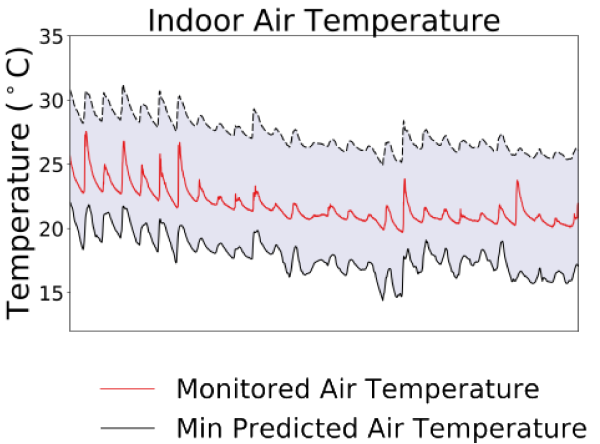Better prediction of overheating in new homes
A detailed study of three modern, energy-efficient flats has been carried out to improve the means of predicting indoor temperatures and the risk of overheating, when designing multi-residential buildings.
Overheating in modern homes – which are often designed with a focus on improving energy efficiency – is a growing problem and likely to be exacerbated by climate change. To counter this, it is important when designing buildings to reliably assess indoor temperatures and the potential for overheating. These are typically predicted with dynamic simulations, using Building Performance Simulation (BPS) tools.
BPS tools need accurate data on a complex range of issues in the areas of climate, site context, building fabric, building services and occupant behaviour. All of these bring high levels of uncertainty that make correctly predicting indoor temperature very difficult, and can lead to a gap between the expected and actual performance.
A BRE Trust supported PhD project has been conducted by Kostas Mourkos at Loughborough University, to improve BPS tools’ reliability when predicting overheating risks in homes in multi-residential buildings. This was achieved by studying in detail three modern energy-efficient flats located in London. The flats are representative of many high-density developments built in London in recent years.
Areas of overheating assessments that have been revealed as needing improvement by the analysis include:
- Specifying input values for parameters, such as the ventilation rates of mechanical ventilation systems.
- Providing guidance on handling the thermal interaction between communal spaces and the assessed flat.
- Examining different infiltration and exfiltration pathways.
The analysis also identified the key parameters influencing the observed gap between predicted and monitored indoor air temperature. While demonstrating how such a gap can be efficiently bridged through Bayesian calibration, this research showed that predicting overheating accurately remains challenging.
The research recommended that an overheating assessment should incorporate sources of uncertainty (such as occupant behaviour), by providing a range of values – instead of a single value – of the desired Building Performance Indicator (BPI). It should also consider using less sensitive overheating metrics.
Kostas was supervised by Prof Christina Hopfe and Dr Rob McLeod at Graz University of Technology, Dr Chris Goodier at Loughborough University, and Dr Mick Swainson at BRE. For more information contact Kostas ([email protected]) or access the paper.
[edit] Related articles on Designing Buildings Wiki
- BRE articles.
- BRE Trust.
- Building Research Establishment.
- Heat stress.
- Home Quality Mark high temperature reporting tool.
- Human comfort in buildings.
- Overheating - assessment protocol.
- Overheating in residential properties.
- Overheating.
- Preventing overheating.
- Solar gain.
- Thermal comfort.
- Thermal indices.
- Thermal pleasure in the built environment.
Featured articles and news
A change to adoptive architecture
Effects of global weather warming on architectural detailing, material choice and human interaction.
How big is the problem and what can we do to mitigate the effects?
Overheating guidance and tools for building designers
A number of cool guides to help with the heat.
The UK's Modern Industrial Strategy: A 10 year plan
Previous consultation criticism, current key elements and general support with some persisting reservations.
Building Safety Regulator reforms
New roles, new staff and a new fast track service pave the way for a single construction regulator.
Architectural Technologist CPDs and Communications
CIAT CPD… and how you can do it!
Cooling centres and cool spaces
Managing extreme heat in cities by directing the public to places for heat stress relief and water sources.
Winter gardens: A brief history and warm variations
Extending the season with glass in different forms and terms.
Restoring Great Yarmouth's Winter Gardens
Transforming one of the least sustainable constructions imaginable.
Construction Skills Mission Board launch sector drive
Newly formed government and industry collaboration set strategy for recruiting an additional 100,000 construction workers a year.
New Architects Code comes into effect in September 2025
ARB Architects Code of Conduct and Practice available with ongoing consultation regarding guidance.
Welsh Skills Body (Medr) launches ambitious plan
The new skills body brings together funding and regulation of tertiary education and research for the devolved nation.
Paul Gandy FCIOB announced as next CIOB President
Former Tilbury Douglas CEO takes helm.
UK Infrastructure: A 10 Year Strategy. In brief with reactions
With the National Infrastructure and Service Transformation Authority (NISTA).
Ebenezer Howard: inventor of the garden city. Book review.
Airtightness Topic Guide BSRIA TG 27/2025
Explaining the basics of airtightness, what it is, why it's important, when it's required and how it's carried out.























